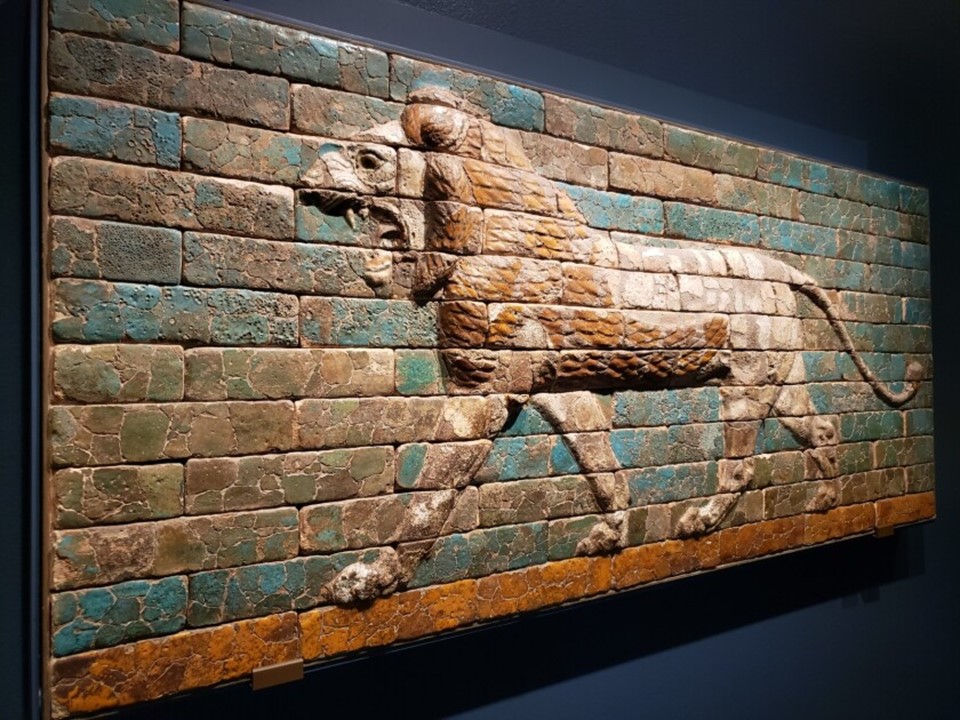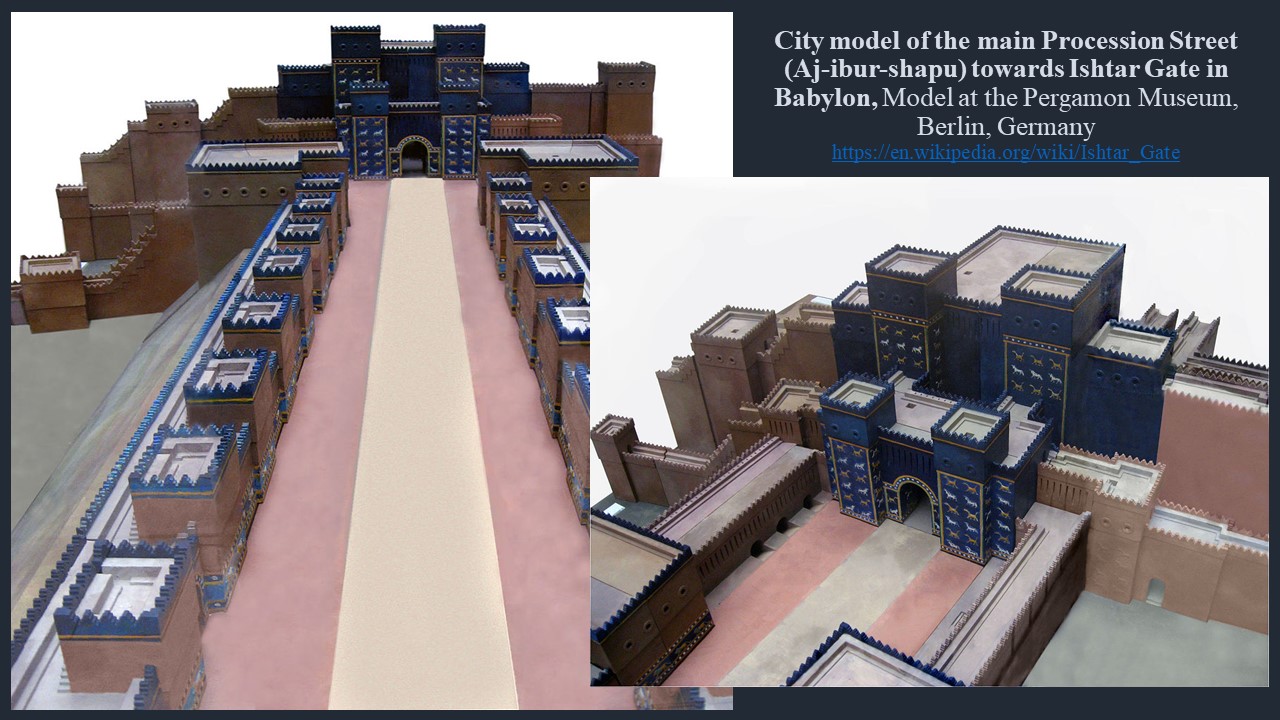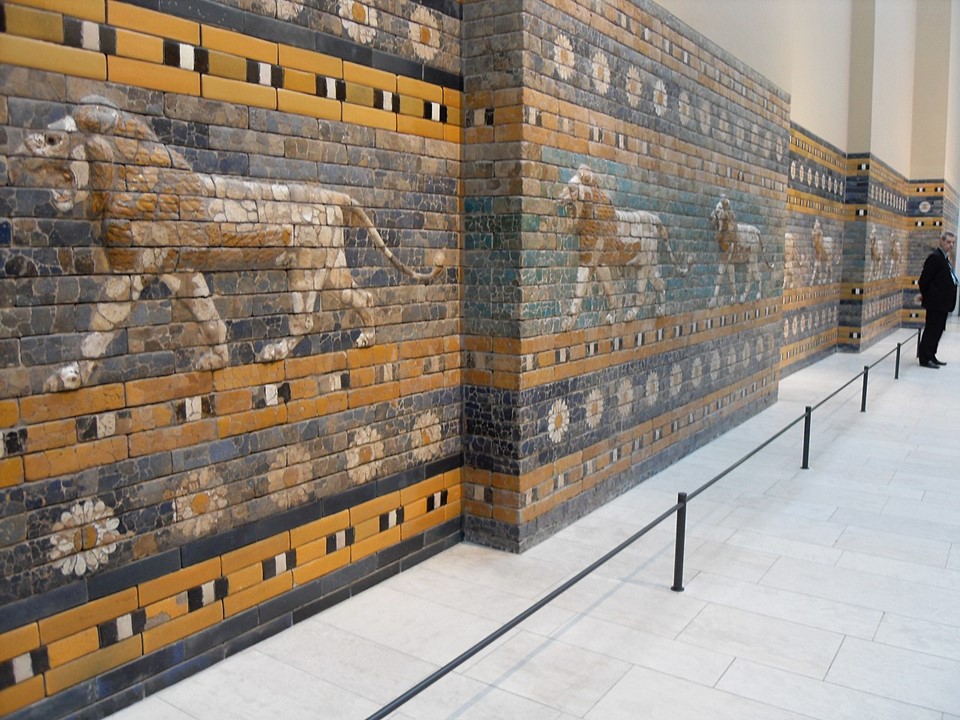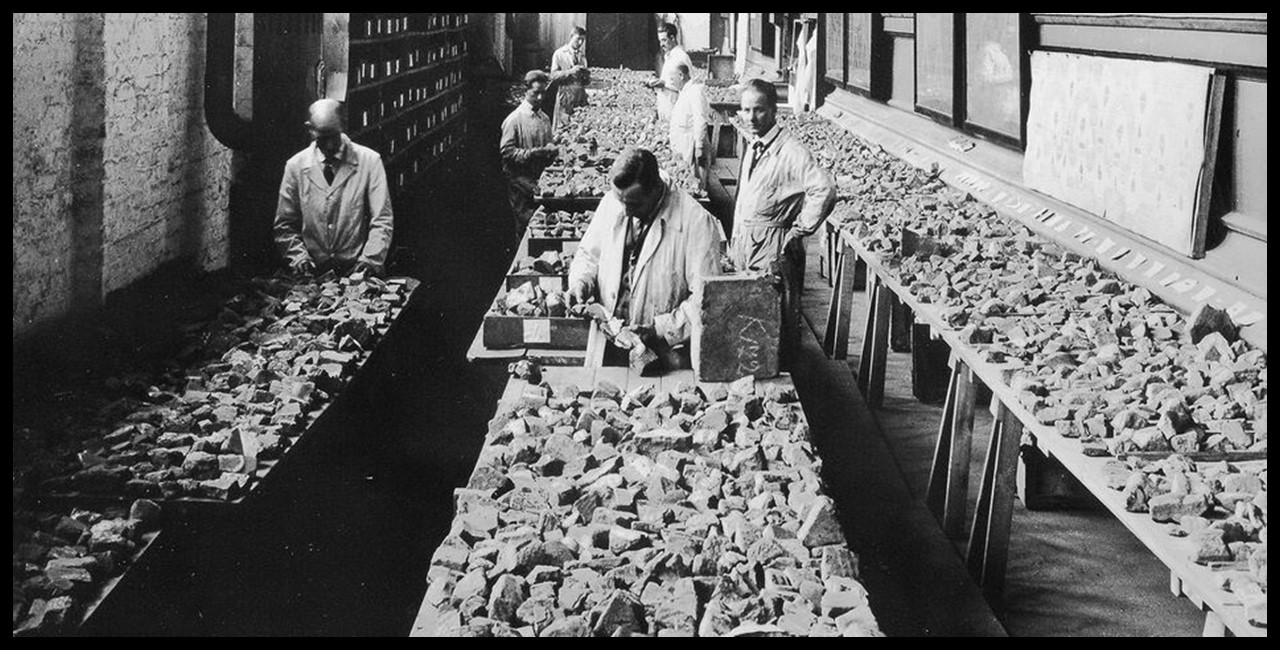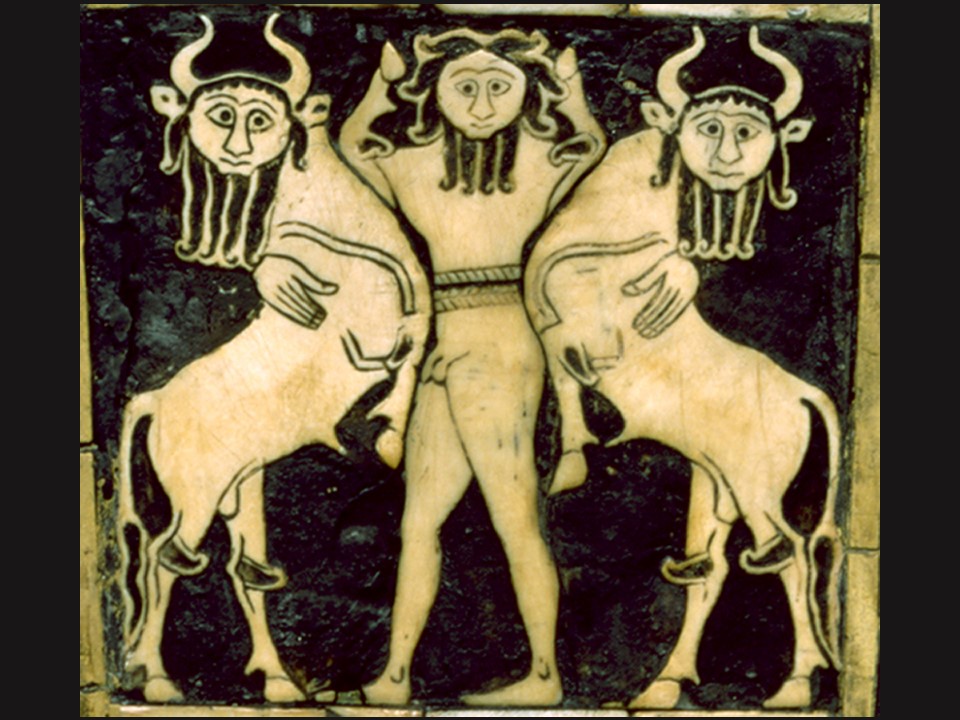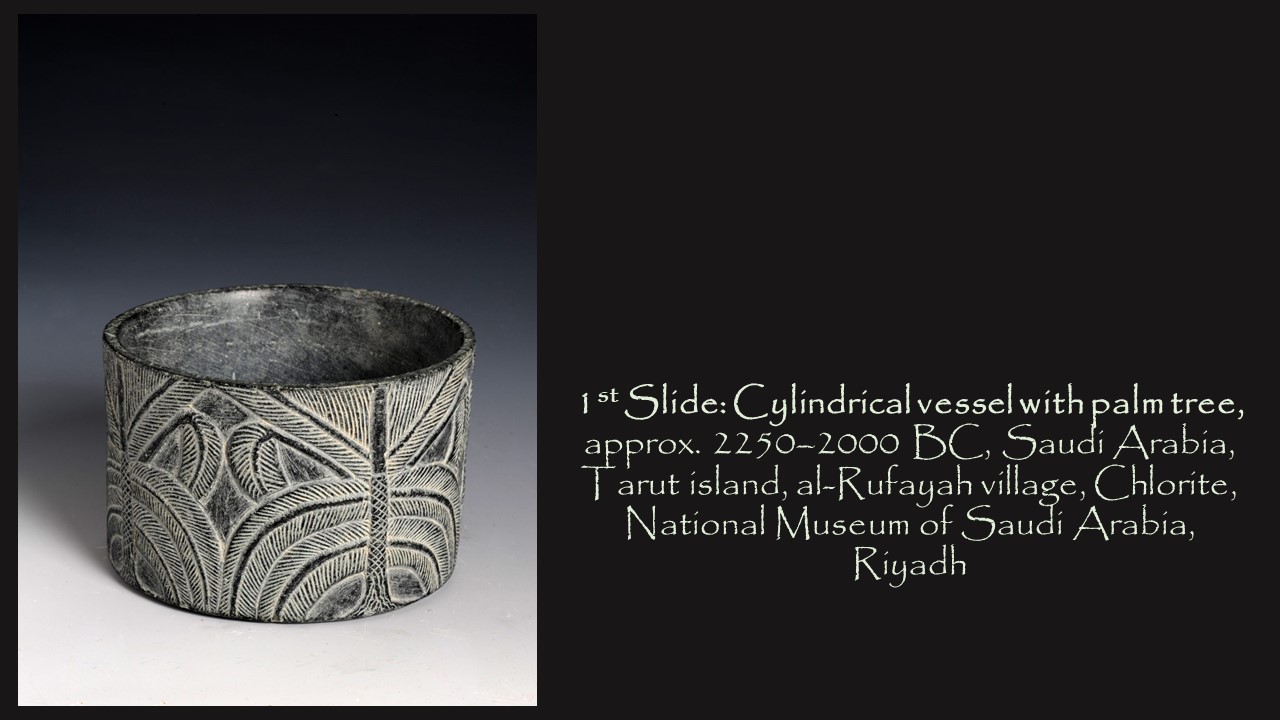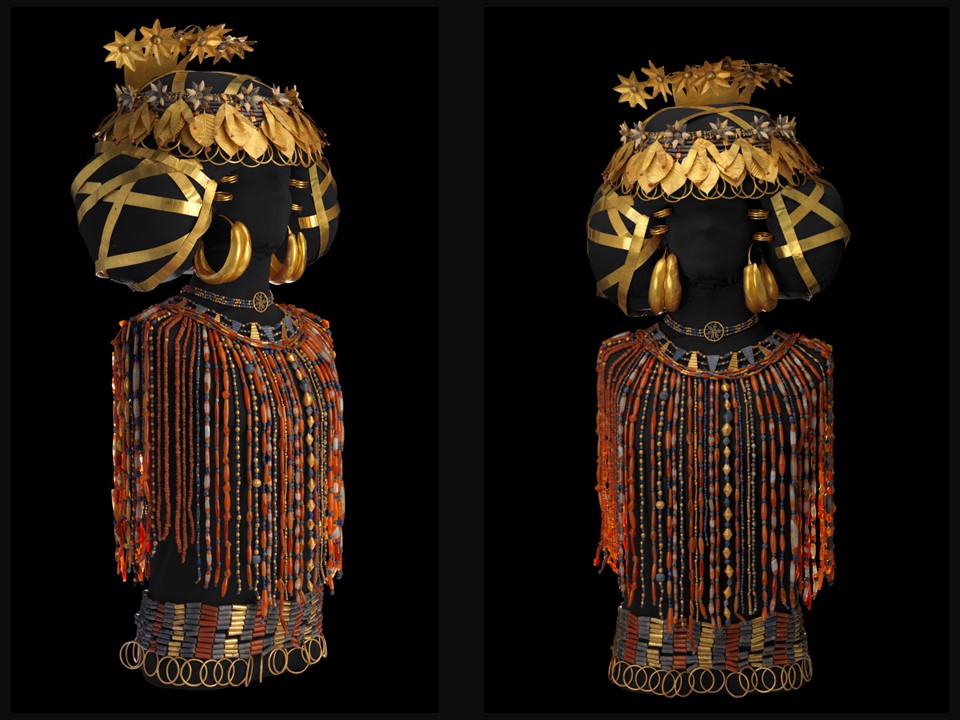
Back on the 4th of January 1928, Sir Leonard Wooley wrote about Puabi’s Tomb and magnificent Jewels … I found the intact tomb, stone built and vaulted over with bricks of Queen Shubad (Puabi) adorned with a dress in which gems, flowers, crowns and animal figures are woven. Tomb magnificent with jewels and golden cups…
Queen Puabi, a name that has endured over millennia, lived during the peak of Ur’s dominance around 2600 BC. This is the Early Dynastic Period of Mesopotamia, which is often referred to as the Early Bronze Age. During her era, the ancient city-state of Ur wielded considerable influence over the Sumer region, which was situated between the southern territories of the Tigris and Euphrates rivers. This period witnessed a flourishing trade environment in Ur, with trade routes extending from present-day India to Sudan.
Puabi was apparently one of Ur’s most powerful Ladies… Her name and title are known from the short inscription on one of three cylinder seals found on her person. Although most women’s cylinder seals at the time would have read “wife of ___,” this seal made no mention of her husband. Instead, it gave her name and title as queen. The two cuneiform signs that compose her name were initially read as “Shub-ad” in Sumerian. Today, however, we think they should be read in Akkadian as “Pu-abi” (or, more correctly, “Pu-album,” meaning “word of the Father”). Her title “eresh” (sometimes mistakenly read as “nin”) means “queen.” https://www.penn.museum/collections/highlights/neareast/puabi.php
This amazing Lady was immortalized through the discovery of her undisturbed Tomb in the ancient city of Ur, in present-day Iraq. Designated as PG 800, Puabi’s Tomb was excavated by British archaeologist Sir Leonard Woolley in the 1920s as part of his extensive work at the Ur archaeological site. The tomb, located in the Royal Cemetery of Ur, is one of the most famous archaeological discoveries in Mesopotamia. In the years following the discovery of Puabi’s tomb, her legacy has continued to captivate researchers and the public alike, shedding light on the fascinating history of ancient Mesopotamia.
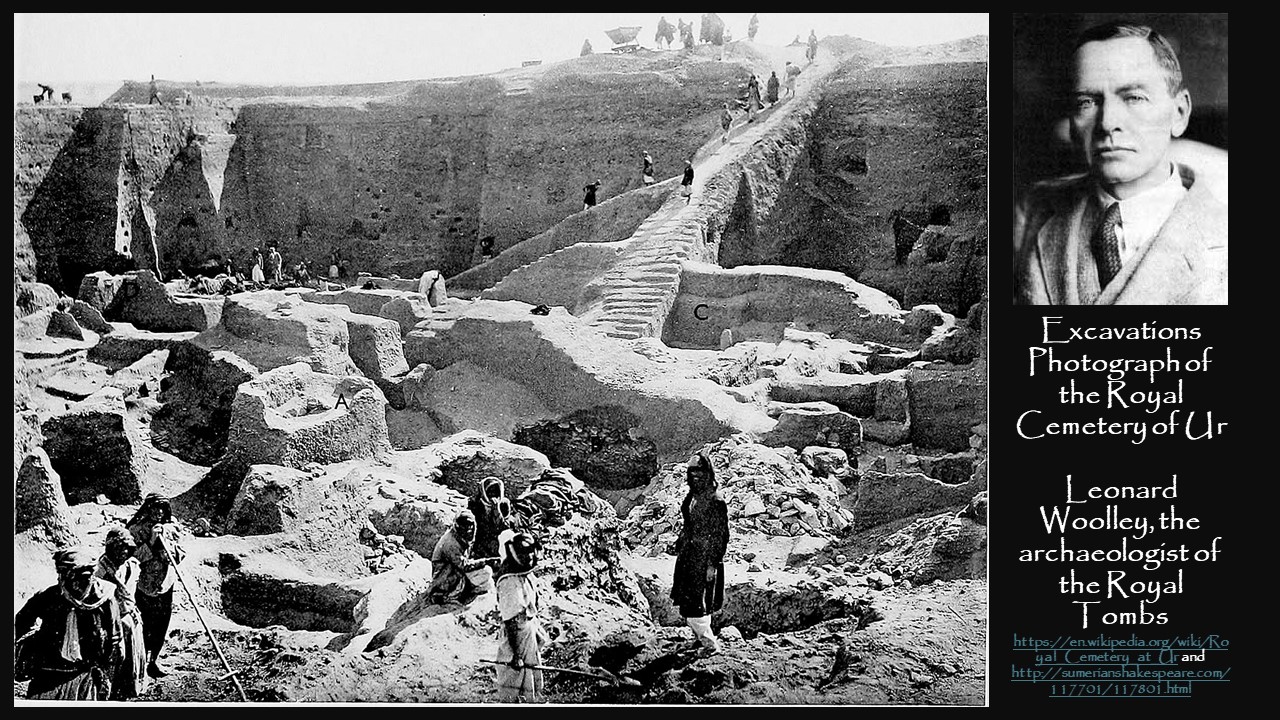
Inside Puabi’s tomb, archaeologists found a rich collection of artifacts, including jewelry, elaborate headdresses, musical instruments, and pottery that reflect the advanced craftsmanship and culture of ancient Sumer. She was buried with great ceremony and luxury, suggesting that she held a high status in Sumerian society, possibly as a queen or priestess.
I am particularly fascinated by her ‘formal’ attire… golden, carnelian red, and lapis-lazuli blue! I can imagine her, resplendent in her jewels attending official banquets, shining under the golden light of oil lamps. What a powerful impression she must have been!
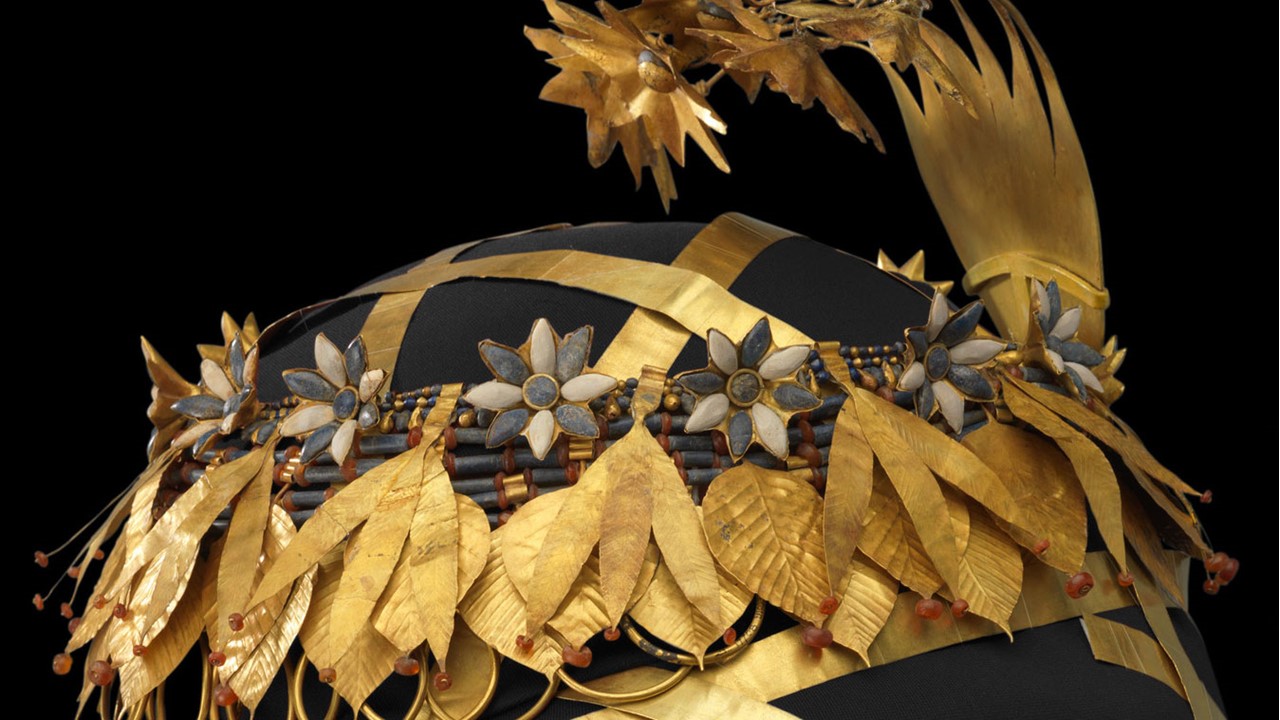
According to the Penn Museum experts, where a significant part of her treasure is housed… Puabi’s ornate headdress and pair of earrings were found with her body in the Royal Cemetery at Ur. The headdress is made up of 20 gold leaves, two strings of lapis and carnelian, and a large gold comb. In addition, the queen wore chokers, necklaces, and large lunate-shaped earrings. Her upper body was covered by strands of beads made of precious metals and semiprecious stones that stretched from her shoulders to her belt. Ten rings decorated her fingers. A diadem or fillet made up of thousands of small lapis lazuli beads with gold pendants depicting plants and animals was apparently on a table near her head. https://www.penn.museum/collections/highlights/neareast/puabi.php
What an indelible and commanding presence she has left!
For a PowerPoint titled Puabi’s Tomb and Magnificent Jewels, please… Check HERE!
For the Penn Museum Video, titled Dressing Queen Puabi, please Check… https://www.youtube.com/watch?v=kZngHY1nriA
Interesting articles on The Royal Tombs of Ur, Mesopotamia, New Investigations, New Results from the Examination of Metal Artifacts and other Archaeological Finds… https://www.bergbaumuseum.de/fileadmin/forschung/zeitschriften/metalla/22.1/metalla-22-1-royal-tombs-of-ur-mesopotamia-klein-hauptmann.pdf
